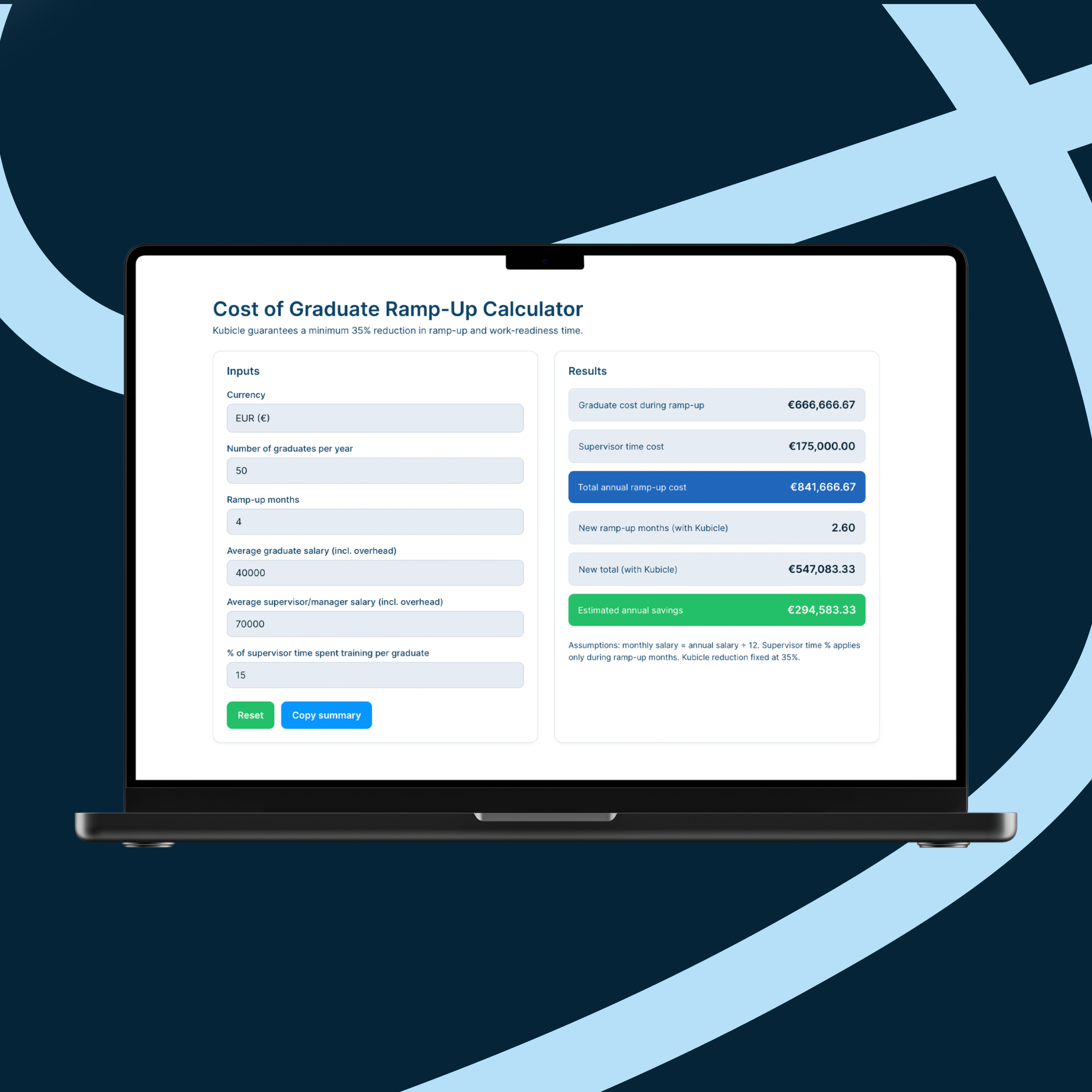Countdown to Compliance: What the EU AI Act Means for Your Business
The EU AI Act entered into force on 1 August 2024, marking the start of a new chapter in how artificial intelligence is governed across the European Union - and far beyond its borders. This isn’t just a regulatory update. It’s a strategic wake-up call for every business deploying or developing AI, regardless of location. Whether you’re already working with AI or still exploring its potential, the Act will affect your operations, your systems, and your people. Let’s walk through what’s come, what's coming, when it’s coming, and how you can turn compliance into a competitive advantage.

Speak to One of our Learning Consultants Today
Talk to SalesThe Act at a Glance: Why It Exists, and Why It Matters
The rapid acceleration of AI has brought extraordinary gains in productivity, efficiency, and innovation. But it has also introduced new risks, ranging from biased decision-making and opaque outcomes to the potential misuse of biometric data or generative deepfakes.
The EU AI Act was created to manage these risks through a risk-based regulatory framework, while still enabling AI to flourish responsibly. Its goal is simple: ensure that AI works for people, not against them.
The Act applies to both AI providers (those who develop and place AI systems on the market) and deployers (organizations that use AI in their operations). And it doesn’t just affect companies based in Europe. If your systems interact with EU users or customers, you’re in scope.
Key Compliance Deadlines: What Happens and When
Understanding the timeline is essential for any organization aiming to avoid regulatory pitfalls..
1. Prohibited Practices Banned from 2 February 2025
Within six months of the Act entering into force, a list of banned AI practices becomes illegal across the EU. These include:
- AI systems that manipulate human behaviour in harmful ways
- Emotion recognition and social scoring systems
- Untargeted facial recognition scraping from public images
- Predictive policing tools based on profiling
If your AI system touches any of these areas, even indirectly, it must be retired or reengineered immediately.
2. General-Purpose AI (GPAI) Obligations Apply from 2 August 2025
In twelve months, any provider of general-purpose AI models must meet new transparency, documentation, and risk mitigation standards. These include disclosures about training data, intended use, systemic risk classification, and capabilities and limitations.
For companies deploying GPAI in high-risk areas (such as legal analysis or healthcare) a compliance strategy is no longer optional. You’ll need internal governance, explainability protocols, and AI literacy across your teams.
3. Full Applicability from 2 August 2026
Most provisions of the EU AI Act apply from 2 August 2026. From this point forward, all high-risk AI systems must meet strict requirements across areas such as:
- Risk management
- Data governance
- Transparency and documentation
- Conformity assessments
- Human oversight
If your organization uses AI in critical functions (like recruitment, credit scoring, or medical diagnostics) you’ll need fully documented compliance processes in place.
4. Extended Deadline for Some High-Risk Systems: 2 August 2027
If your AI system forms part of a product subject to pre-existing EU harmonisation laws (such as medical devices or automotive systems), and requires a third-party conformity assessment, you get an additional year (until August 2027) to comply.
5. Grandfathering Rules and the 2030 Deadline
If you already have a high-risk AI system in place before August 2026, it can continue operating - unless it undergoes significant changes, or is used by public authorities. In that case, it must comply fully by 2 August 2030.
Your Compliance Challenge
The EU AI Act goes well beyond simple documentation. It introduces a structural shift in how AI is managed across the business landscape. It requires teams to understand the risk category of each AI system, know their responsibilities under the Act, and embed compliance into day-to-day operations.
It also requires something else: AI literacy. Without it, businesses will struggle to understand what they’re regulating, let alone how to do so effectively.
At Kubicle, we’ve seen this challenge across hundreds of organizations. Leaders know they need to act, but aren’t always sure how to upskill their teams or where the real compliance risks lie.
How the Risk Categories Work
The Act categorizes AI systems based on risk to individuals and society:
- Unacceptable Risk: Prohibited outright
- High Risk: Subject to strict compliance frameworks
- Limited Risk: Requires transparency (e.g., chatbots must disclose they are AI)
- Minimal Risk: No legal requirements, but voluntary codes of conduct encouraged
Most business-critical systems will fall under high or limited risk. That means detailed documentation, robust oversight, and active staff training are essential.
Compliance Requires Capability
Navigating these new rules isn’t just a matter for legal and compliance teams. It affects developers, analysts, managers, and front-line decision-makers. It means upskilling across functions, particularly in:
- Understanding AI systems and classifications
- Knowing the responsibilities of providers and deployers
- Interpreting AI outputs responsibly
- Recognizing and mitigating bias
- Maintaining explainability and audit readiness
Kubicle’s training helps businesses close the skill gap that now sits between regulatory obligation and real-world application. Through practical lessons, interactive assessments, and AI-assisted simulations, we turn legal mandates into workplace capability.
Looking Ahead
As the EU AI Act takes hold, we’re entering a new era of accountability. But regulation doesn’t have to be a brake on progress. For the businesses that prepare early, it’s a chance to lead with confidence, embed trust in their AI strategy, and operate with integrity across borders.
If you want to be one of those businesses, the time to act is now.
Need help preparing your team for the EU AI Act?
Explore Kubicle’s Generative AI and Regulation and Governance learning paths or speak to us about enterprise solutions. We’re here to help you close the gap between regulation and readiness, risk and resilience, innovation and trust.



.png)









